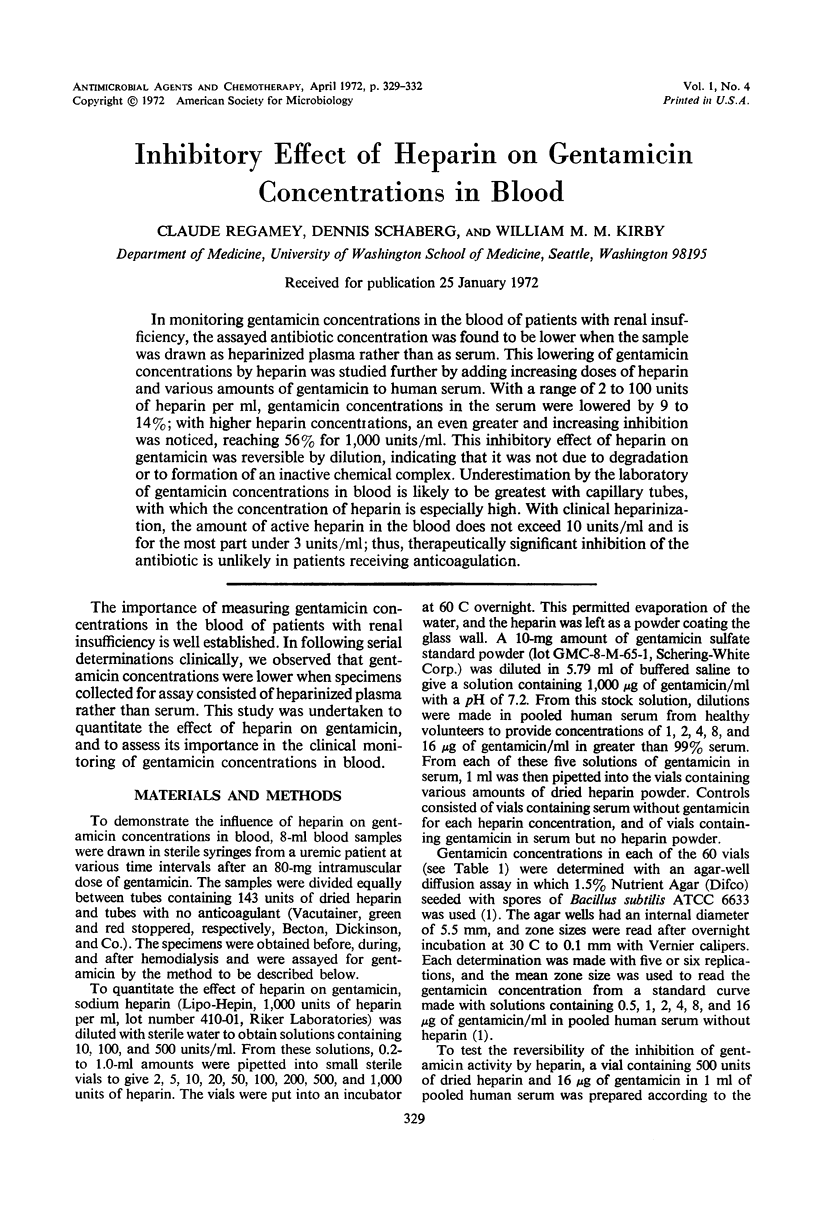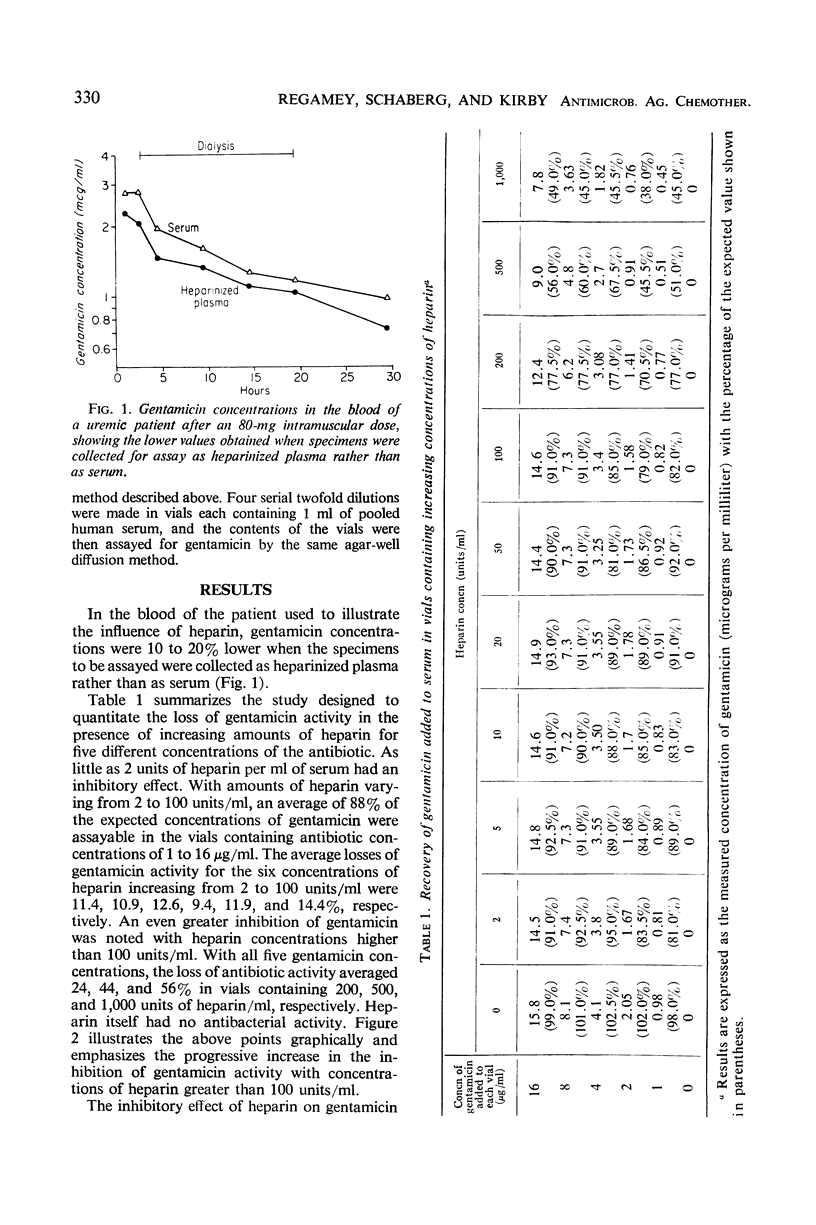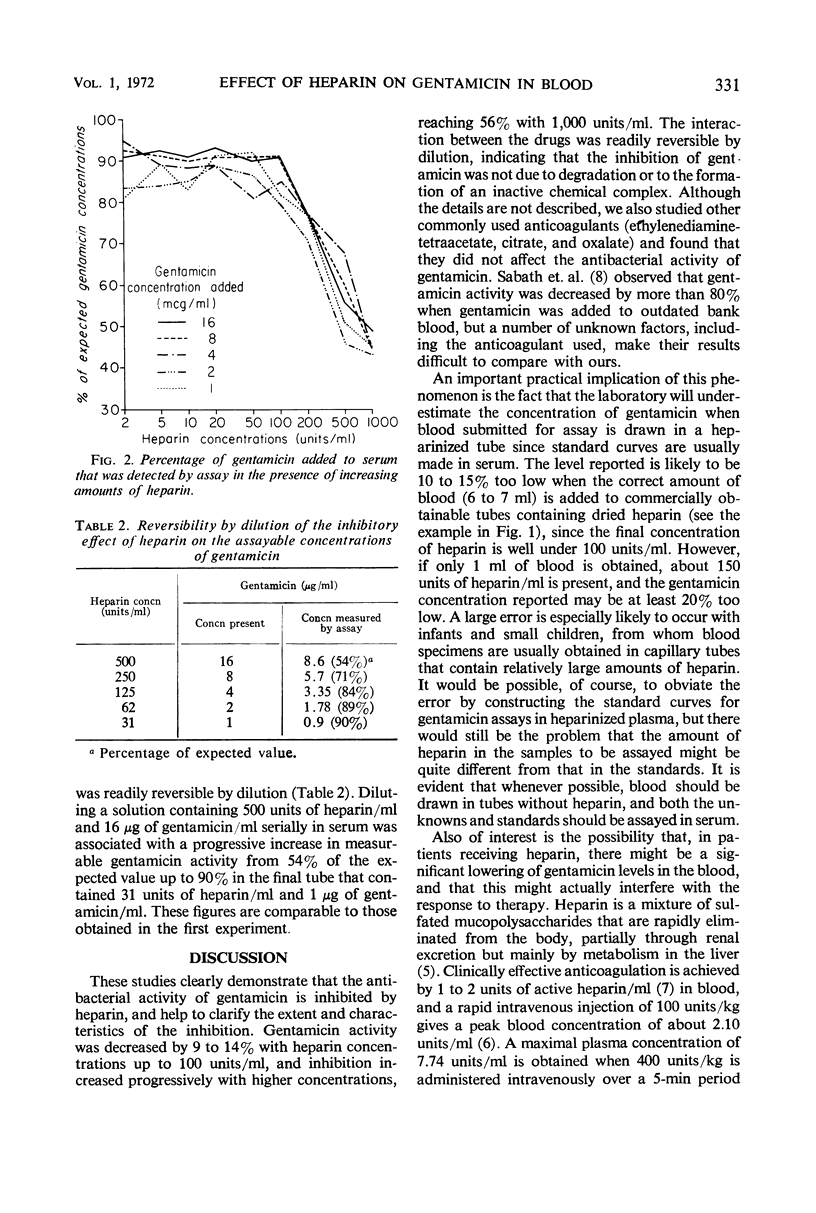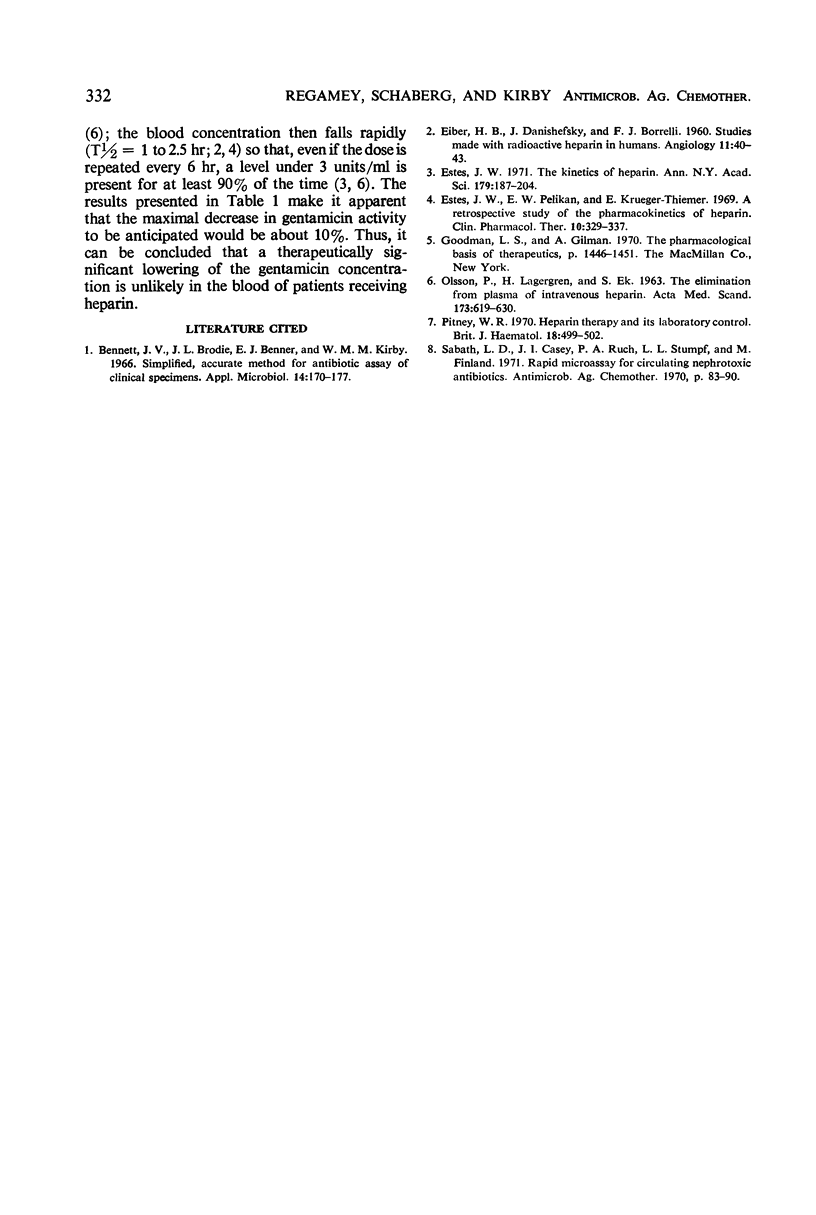Abstract
In monitoring gentamicin concentrations in the blood of patients with renal insufficiency, the assayed antibiotic concentration was found to be lower when the sample was drawn as heparinized plasma rather than as serum. This lowering of gentamicin concentrations by heparin was studied further by adding increasing doses of heparin and various amounts of gentamicin to human serum. With a range of 2 to 100 units of heparin per ml, gentamicin concentrations in the serum were lowered by 9 to 14%; with higher heparin concentrations, an even greater and increasing inhibition was noticed, reaching 56% for 1,000 units/ml. This inhibitory effect of heparin on gentamicin was reversible by dilution, indicating that it was not due to degradation or to formation of an inactive chemical complex. Underestimation by the laboratory of gentamicin concentrations in blood is likely to be greatest with capillary tubes, with which the concentration of heparin is especially high. With clinical heparinization, the amount of active heparin in the blood does not exceed 10 units/ml and is for the most part under 3 units/ml; thus, therapeutically significant inhibition of the antibiotic is unlikely in patients receiving anticoagulation.
Full text
PDF



Selected References
These references are in PubMed. This may not be the complete list of references from this article.
- Bennett J. V., Brodie J. L., Benner E. J., Kirby W. M. Simplified, accurate method for antibiotic assay of clinical specimens. Appl Microbiol. 1966 Mar;14(2):170–177. doi: 10.1128/am.14.2.170-177.1966. [DOI] [PMC free article] [PubMed] [Google Scholar]
- EIBER H. B., DANISHEFSKY I., BORRELLI F. J. Studies made with radioactive heparin in humans. Angiology. 1960 Feb;11:40–43. doi: 10.1177/000331976001100108. [DOI] [PubMed] [Google Scholar]
- Estes J. W., Pelikan E. W., Krüger-Thiemer E. A retrospective study of the pharmacokinetics of heparin. Clin Pharmacol Ther. 1969 May-Jun;10(3):329–337. doi: 10.1002/cpt1969103329. [DOI] [PubMed] [Google Scholar]
- Estes J. W. The kinetics of heparin. Ann N Y Acad Sci. 1971 Jul 6;179:187–204. doi: 10.1111/j.1749-6632.1971.tb46899.x. [DOI] [PubMed] [Google Scholar]
- OLSSON P., LAGERGREN H., EK S. The elimination from plasma of intravenous heparin. An experimental study on dogs and humans. Acta Med Scand. 1963 May;173:619–630. doi: 10.1111/j.0954-6820.1963.tb17446.x. [DOI] [PubMed] [Google Scholar]
- Pitney W. R. Heparin therapy and its laboratory control. Br J Haematol. 1970 May;18(5):499–502. doi: 10.1111/j.1365-2141.1970.tb00770.x. [DOI] [PubMed] [Google Scholar]
- Sabath L. D., Casey J. I., Ruch P. A., Stumpf L. L., Finland M. Rapid microassay for circulating nephrotoxic antibiotics. Antimicrob Agents Chemother (Bethesda) 1970;10:83–90. doi: 10.1128/AAC.10.1.83. [DOI] [PubMed] [Google Scholar]


